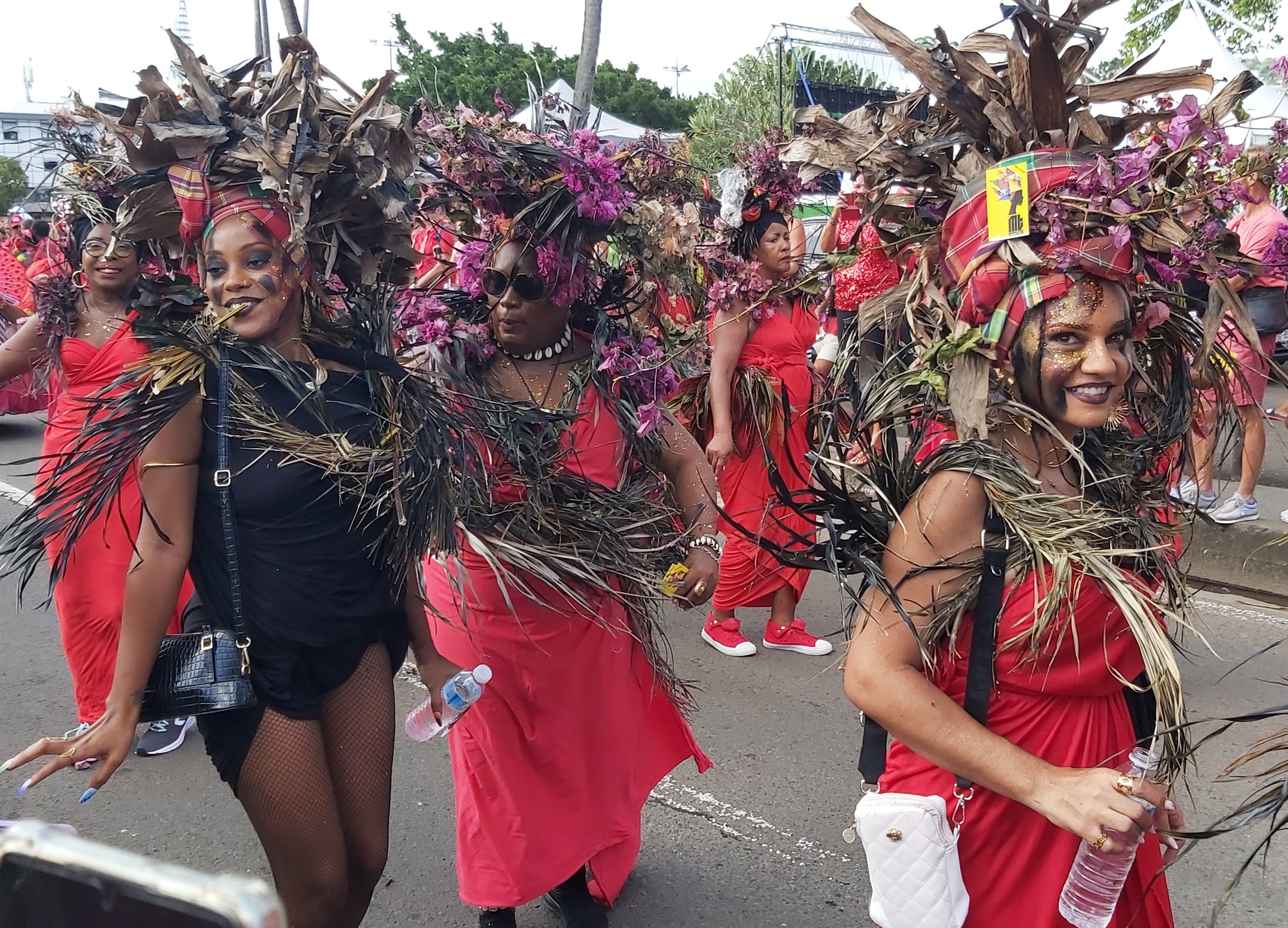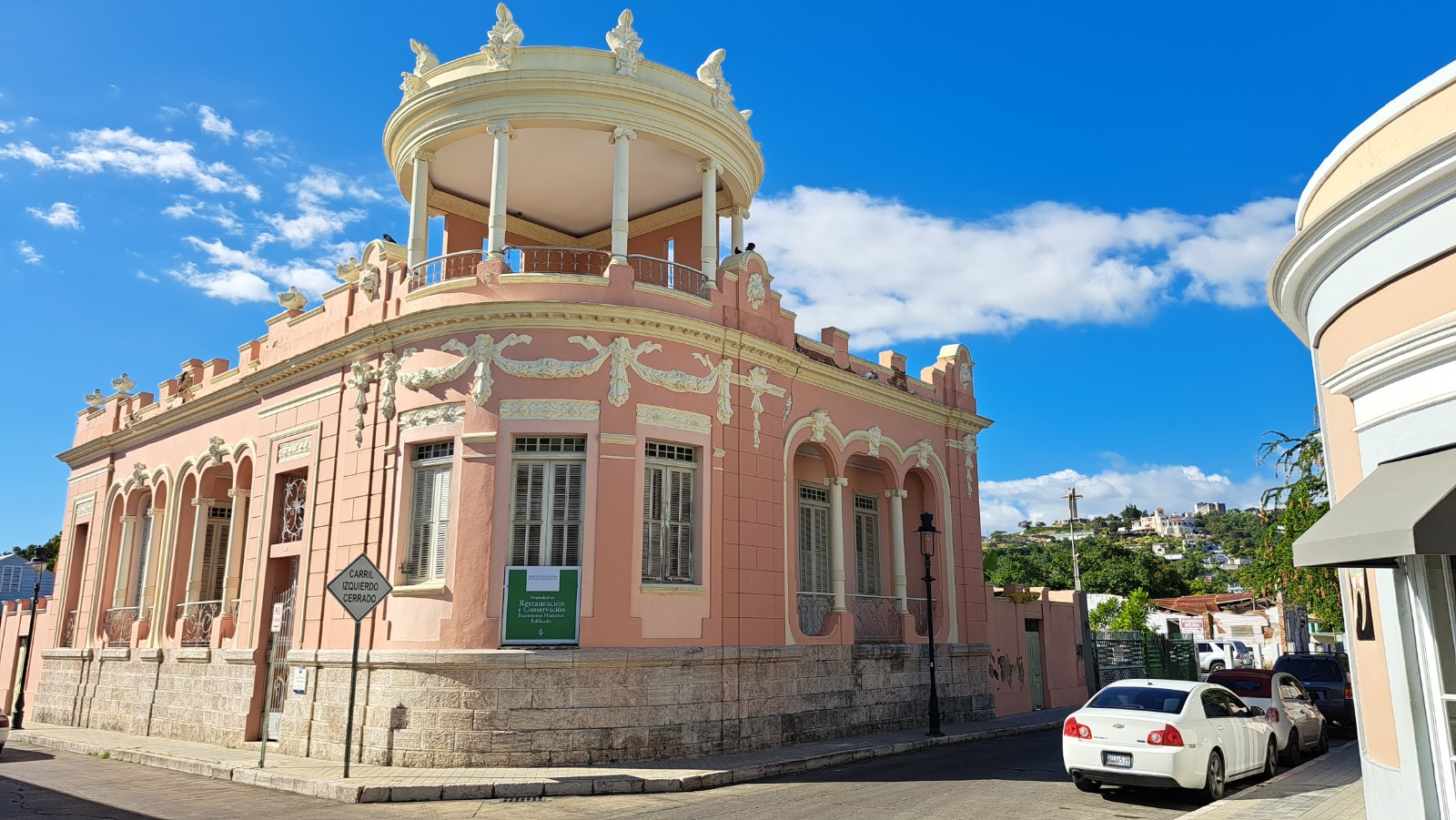February 15
Happy chaos is how a friend of mine described carnival days in a city in the Tropics. It’s the best term I would also use for Martinique’s 4-day carnival. Each day has a parade starting at around 16:00, until about 20:00. Kids are on vacation for 2 weeks. And stores are only open until 13:30. Because of internet bandwidth limitations, we will wait until we go home to post pictures on the website. We’re sorry you can’t see many of them now.
Day 1 is Fat Sunday. The queens are introduced (each surrounding community has one, there’s also a mini-queen who’s about 8 years old). Walkers are proudly showing off their elaborate costumes. King Vaval – the carnival’s mascot – is also introduced. King Vaval is in Martinique a half crocodile, half whale. Vaval rides on a platform in the parades.
Day 2 is Fat Monday – Burlesque Weddings. Men dress as women, women as men. Men in Martinique have no qualms wearing 3-inch platform shoes, fishnet stockings, g-strings and not much else.
Day 3 is Fat Tuesday. Black and Red are the prevalent colours. The carnival is historically a festivity of the devil and hell. This day and parade are the busiest, loudest, longest and wildest.
Day 4 is Ash Wednesday. Last day. Black and White are the prevalent colours. The festivities end by burning King Vaval on a pyre.
There are many components in the daily parades that I’d like to cover, not in any particular order. Many components are unique to Martinique.
The “Bwadjaks”
A few creative guys had painted carnival-themed and very colourful designs on their low-riding, old-but-renewed cars. They are very loud due to their perforated exhaust pipe which makes a booming sound. When many of them start, the din sounds like fireworks. Bwadjaks start the fun in surrounding communities a week before carnival. They are part of the daily parades. On their roofs and crammed inside, a few revelers enjoy the ride.
The Walkers (“Groupes a Pied)
The parade is mostly composed of costumed people walking in groups. Some of the costumes are quite elaborate, some are symbolic. For example, the Red Devils, the Neg Gwo Siwo (people covered in molasses representing slaves on the run), Marian’ Lapofig (costume made of dried leaves from banana trees), The Touloulous (women in elegant dresses and head gear with a masque representing the bourgeoisie), The Malpwops (people dressed with very little or nothing at all).
The Music
The music bands play local music and sounds with handmade or brass instruments, drums and conchs. Handmade instruments are often made of coconuts or bamboo. The music is rhythmic, easy to get hooked and start dancing alongside. A few trucks had big loudspeakers and a DJ playing contemporary music for the young revelers. It is sometimes so loud it feels like I had a boombox in my body vibrating from my toes to my head. Also, some parents of babies and toddlers put earphones over their child’s ears. Everybody sing and dance to the music.
The Floats
We saw very few floats besides King Vaval’s and the queens. Most of the participants’ time and effort are spent on costumes and music with its choreography.
Carnival in Martinique is a must-see. The festive and exciting atmosphere is contagious. It represents Martinique’s culture and tradition. It is an opportunity to see the creativity and gaiety of its people.
This morning, we moved on to a bay nearby called Baie de Genipa near the community of Ducos. There are mangrove and not much else. Finally, we found a bay with only one boat (2000 feet from us)! The calm water and quiet is a balm to our senses after 4 days of Martinique Carnival.
Bonne Fete, David!



